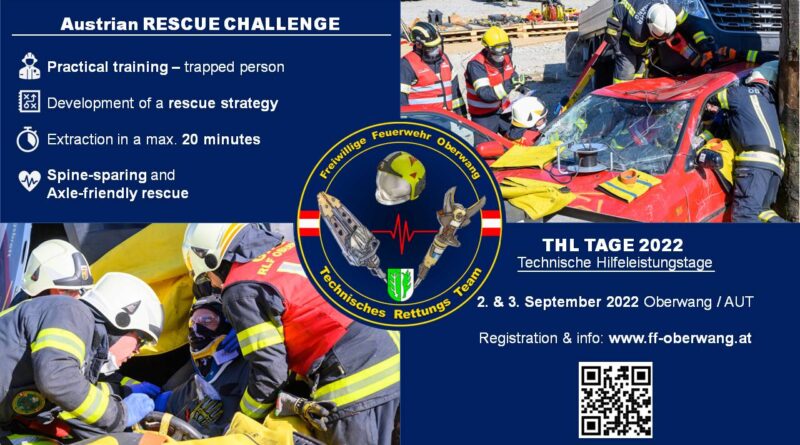The Austrian technical rescue days
The Austrian technical rescue days are an annual meeting of fire brigades of different nationalities to train the structured rescue of people after traffic accidents at the most professional level, to exchange knowledge and to make and maintain friendships.
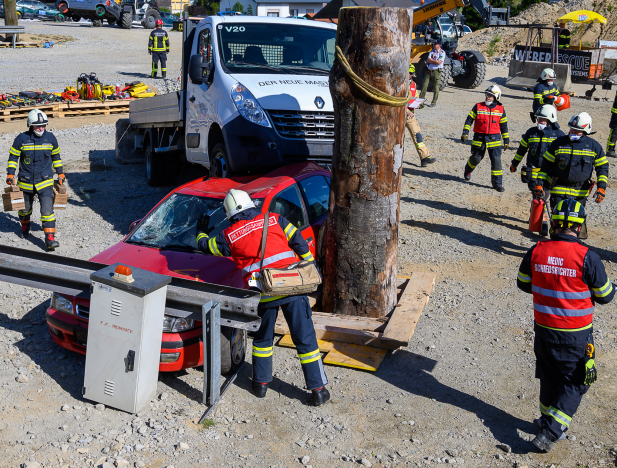
Motivation for the technical rescue days:
Vehicle technologies and the preclinical care of accident victims have continued to change rapidly in recent years. Vehicles have to be built more and more stable and safe, but accident medicine requires ever faster and yet gentle rescue and transport of injured people to a clinic. The range of tasks for the fire brigade is therefore becoming increasingly complex and fast-moving.
Events like the technical rescue days help us to keep up with new technologies and pass on new knowledge. Only a structured way of working creates an environment in which these requirements can be met. Having this way of working evaluated by international and experienced trainers offers the opportunity to develop further.
Who can participate:
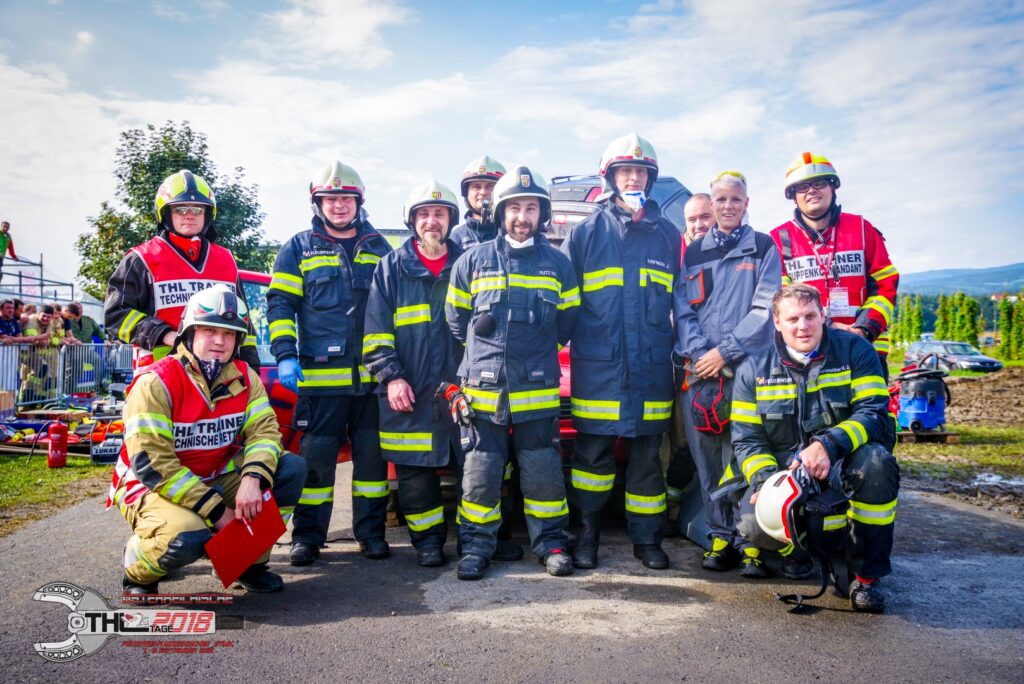
Any team worldwide can take part, as long as it is responsible for technical human rescue in its area of responsibility. So far, the teams have always been a mix of Austria, Germany, Switzerland, Luxembourg and England. Some Austrian teams already have experience at an international level.
The Austrian technical rescue days is not a competition but a training event with the focus on patient-friendly rescue of people from vehicles involved in an accident with few staff and precise distribution of tasks. The goal is of course the mutual learning effect and the exchange of experiences between the fire brigades. Even if the whole thing takes place under the supervision of referees, it is not a competition in the traditional sense, but learning is the top priority.
What happens at that event ?
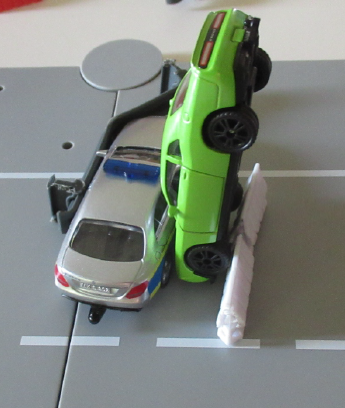
The organizer considers various accident scenarios and the resulting rescue routes in advance and records these in the construction plan. A traffic accident is represented with one or two vehicles and other obstacles. A person is positioned in the vehicle as an injured person. How the accident is presented is entirely up to the creativity of the fire brigade involved. The cars can stand on their wheels, lie on their sides or on their roofs. Obstacles provided such as electrical boxes, trees or iron bars make rescue more difficult and must not be cleared aside.
When registering, the participating team draws the construction plan in a sealed envelope. All team participants go into quarantine in the changing area no later than 30 minutes before the start time.
The assembly team now gets the assembly plan drawn by the team and constructs the corresponding accident scenario based on it.
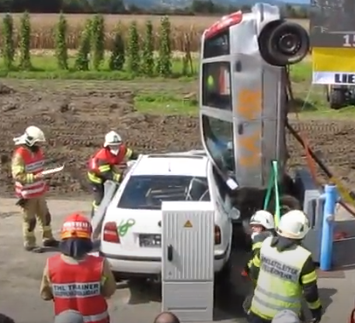
After the completion of the accident scenario, the rescue team comes out of the quarantine and, as in a real accident, the team sees the scenario to be worked through after arriving at the pit to think about and process.
The team is observed closely by the referees, with positive notes and potential for improvement being noted for the subsequent final meeting.
The team, consisting of six people, has 20 minutes in the “standard pit” to free the injured person from the accident vehicle as gently as possible. Tactical measures must be taken into account. The state of health of the accident victim remains stable if the inner rescuer carries out the appropriate measures.
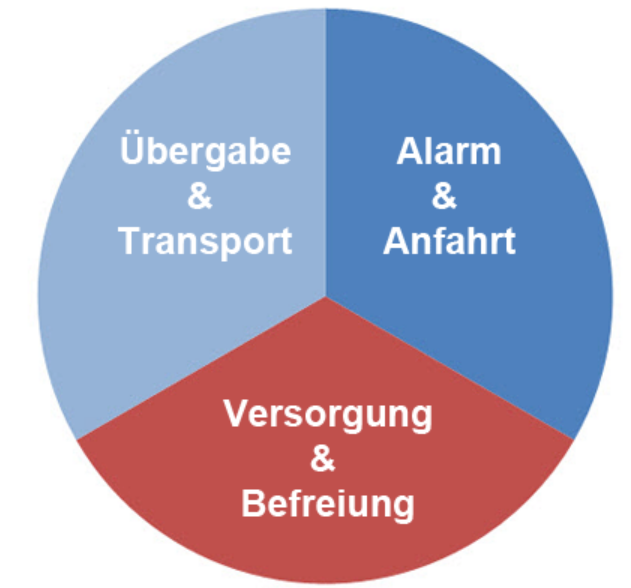
Target time for a standard scenario?
The target time for a standard scenario (standard pit) is 20 minutes.
This time results from the “Golden Hour of Shock”. In the event of an emergency, 20 minutes are expected for the alerting and arrival of the emergency services, a further 20 minutes for freeing and rescue from the accident vehicle and another 20 minutes for transporting the injured person to the hospital. In total, 1 hour within which the patient has the best, most complete chance of healing without consequential damage.
Target time for a complex scenario?
The target time for a complex scenario is 30 minutes.
It essentially differs from the standard pit in that two people have to be rescued. The challenge here is that both medics must attend to two injured people in parallel, and then prioritize the order of rescue based on the injury pattern. The rest of the team is also more challenged as the 2nd Medic is involved with patient care from the start and both patient rescues need to be performed.
Equipment at the venue?

The technical equipment is basically provided by the organizer and essentially consists of items of equipment that are contained in every rescue vehicle. The latest devices and tools from Weber Rescue Systems are also available. However, each team is free to use their own gear. This equipment must comply with current standards and safety regulations and must be approved by the organizer or main referee before the start of the event.
What personal protective equipment is required?
Full personal protective equipment must be worn. Appropriate eye protection (safety goggles) must also be used. The helmet visor on common firefighting helmets does not count as eye protection but can only be used as face protection.
The use of suitable protective goggles is therefore mandatory. Since glass management may also have to be carried out, a face mask (at least class: FFP1) is also mandatory. Cut-resistant gloves and disposable gloves underneath.
